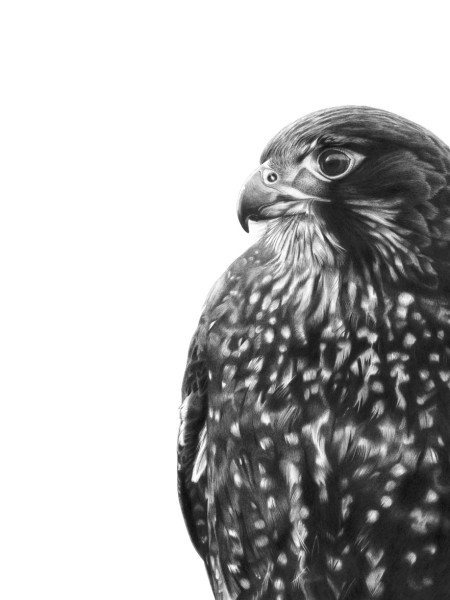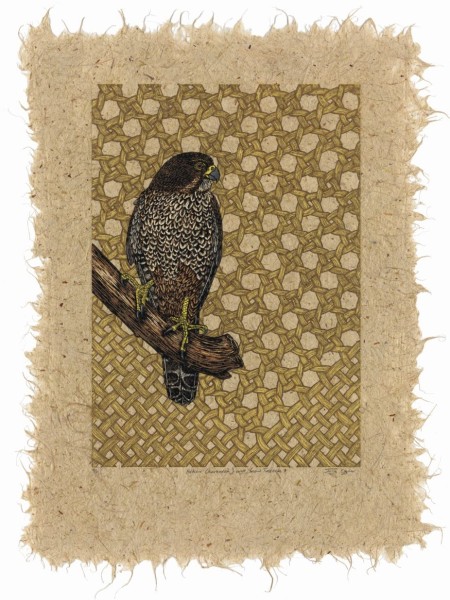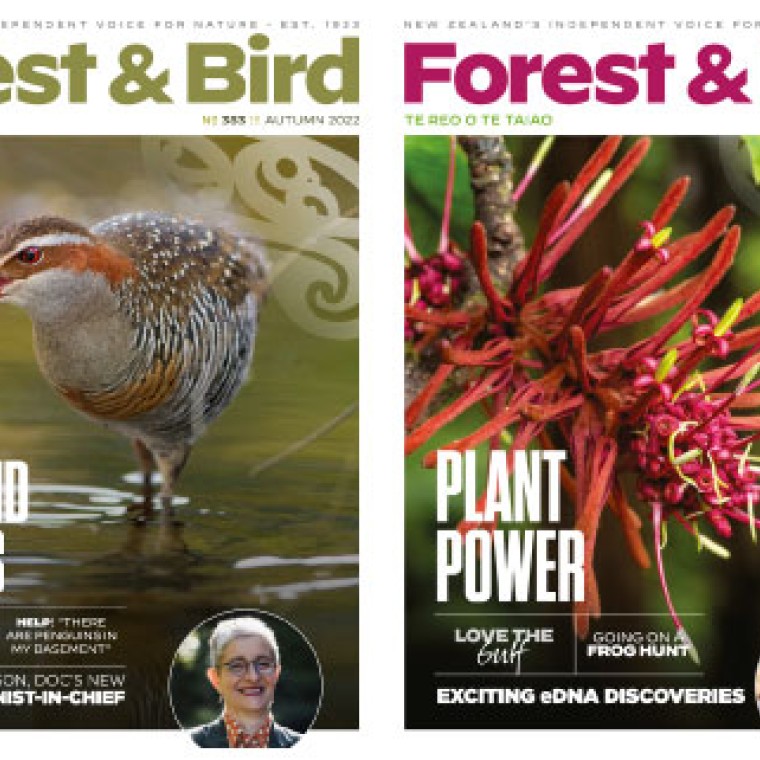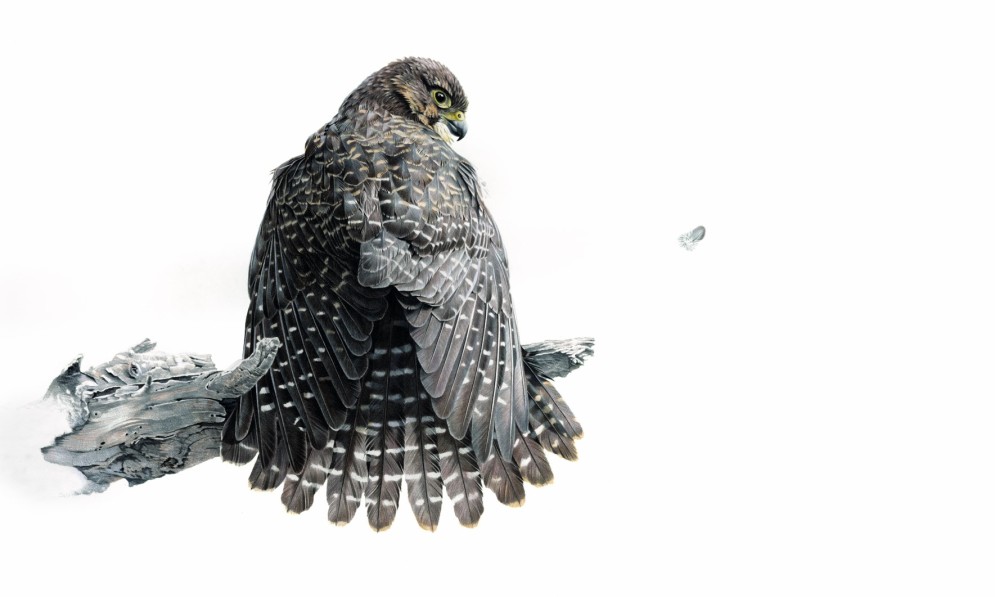An excerpt from Bird of the Year: Twenty years of ruffled feathers. By Ellen Rykers
Nickname: The speedy skydiver
Status: *In serious trouble.
Living on a Canterbury farm, artist Jo Ogier would often catch sight of a bird of prey wheeling above the paddocks, hunting. Then there would be a thunk on the roof of her studio, and venturing outside, she’d come eye-to-eye with the intense stare of an apex predator. Cloaked in chocolate and cream, with rusty feathered pantaloons over its yellow legs, a kārearea would hunch, munching its lunch.

Credit Hannah Shand
Kārearea are falcons found only in Aotearoa, with the unusual ability to hunt in both open country and dense forest. Their physique — rounded wings and a long tail — enables swift manoeuvring in pursuit of prey. They will watch from a perch before mounting an aerial attack — sometimes featuring a spectacular divebomb, during which they can reach speeds of 200 km/h. The unlucky prey is snatched in razor-sharp talons and quickly dispatched with a powerful chomp on the neck.
Kārearea don’t just chow down on small rodents. Birds actually make up the majority of their diet: blackbirds, silvereyes and finches are common quarry, but these falcons can also take out heftier prey like kororā or pheasants, which can weigh more than kārearea themselves.
They’ll even take on humans who venture too close to their nest, emitting a high-pitched kek-kek-kek alarm call before divebombing intruders’ heads with outstretched talons. Despite their feisty nature, kārearea nests — which are often just scrapes in the ground — are vulnerable to hedgehogs, feral cats and mustelids. Collisions with manmade objects like wind turbines and powerlines also contribute to karearea decline, as does habitat loss. Some falcons have learned to live an ‘exotic’ life in pine-forest plantations instead.
Kārearea life isn’t all about attack and defence, though. They spend time sunbathing in the morning, and falcons of all ages will play. First, one will cock their head, twisting it upside-down — the universal karearea sign for ‘Let’s play!’ Pairs swoop and pretend to attack one another, while solo players might have a go at bits of vegetation as toys. In te ao Māori, kārearea in their lofty flight are connected into the spiritual realm, and their screams serve as tohu (signs) for the coming and going of rainy weather.

Kārearea NZ Falcon, Woodcut on NZ Flax Paper. Credit Jo Ogier
In the dry open plains east of the Southern Alps, the kārearea that Jo observed are the eastern form. They’re larger and paler than their southern counterparts — who live in Fiordland, Rakiura and the subantarctic Auckland Islands — and the ‘bush’ falcon that is found in the North Island (south of Waikato) and the northwest of the South Island.
All three forms are threatened — but if Wellington’s experience is anything to go by, predator control can bring back these fierce falcons. Previously, just one kārearea sighting would be reported per year in the capital. Now, it’s six per year, with one even spotted in the central city devouring a meal of feral pigeon. It’s a hopeful sign that perhaps more of us will get to experience the thunk of a kārearea on the roof, just like Jo did.
Bird of the Year trivia: The kārearea ascended into the top spot in 2012 thanks to comedian Raybon Kan’s ‘New Zealand’s got talons’ campaign. ‘I’m overjoyed that democracy has spoken. In tough times, the people need a hero. We need a bird that inspires us — an athletic bird that swoops from the sky, not some wheezy, pedestrian bird that’s a waste of feathers,’ Raybon said at the time.
The kārearea has also enjoyed strong support from the forestry and hunting communities, with endorsements from the Forest Owners Association, New Zealand Game Animal Council, New Zealand Deerstalkers Association Inc and Hunters for Conservation New Zealand.
Bird of the Year: Twenty years of ruffled feathers is available in bookstores nationwide, with royalties supporting Forest & Bird’s work to protect native species and their habitats. Purchase your copy today.

